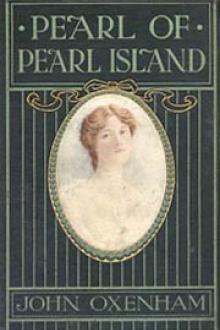The Scarlet Letter, Revised Edition by D.S. Vecchio [simple e reader txt] 📗

- Author: Revised Edition by D.S. Vecchio
Book online «The Scarlet Letter, Revised Edition by D.S. Vecchio [simple e reader txt] 📗». Author Revised Edition by D.S. Vecchio
"ON A FIELD, SABLE, THE LETTER A, GULES."
The End.
ADDENDUM
Book Cover
This oil on canvas painting, The Scarlet Letter
(1860) by T. H. Matteson, was made under the supervision of Hawthorne himself.
Custom House
The story of The Scarlet Letter
is framed by a preface called "The Custom House" in which the narrator, a surveyor in the Custom House, claims to have found documents and papers that substantiate the evidence concerning Prynne and her situation. The narrator says that when he touched the letter to his breast it gave off "burning embers...as if the letter were not of red cloth, but red hot iron." Among these documents, the narrator claims to have found the death certificate of Anne Hutchinson, previously believed to have been destroyed by the Puritan church leaders when they tried to cover up her brutal murder two years earlier. The manuscript, the work of a past surveyor, Jonathan Pue, detailed the events of the trials of Hutchinson's alleged murderers. When the narrator lost his post, he decided to write a fictional account of the events recorded in the manuscript. The Scarlet Letter
was the final product.
Historically, Nathaniel Hawthorne worked in the Custom House in Salem, Massachusetts for several years, eventually losing his job as a result of an administration change. There is no factual basis for the documents described in the book, however, and the preface is properly read as a literary device. Introductions that justify the fantastic content to come were a typical device in romance.
Plot Summary
The novel begins in 17th-century Boston, Massachusetts, then a Puritan settlement. A young woman, Hester Prynne, is led from the town prison with her infant daughter, Pearl, in her arms and the scarlet letter “A” on her bosom. The scarlet letter "A" represents the act of adultery that she has committed and it is to be a symbol of her sin – a badge of shame – for all to see. A woman in the crowd tells an elderly onlooker that Hester is being punished for adultery. Hester's husband, who is much older than she is, was sent ahead to America, but he never arrived in Boston. The consensus is that he has been lost at sea. While waiting for her husband, Hester has apparently had an affair, as she has given birth to a child. She will not reveal her lover’s identity, however, and the scarlet letter, along with her public shaming, is her punishment for her sin and her secrecy. On this day Hester is led to the town scaffold and harangued by the town fathers, but she again refuses to identify her child’s father.
The elderly onlooker is Hester’s missing husband, who is now practicing medicine and calling himself Roger Chillingworth. He settles in Boston, intent on revenge. He reveals his true identity to no one but Hester, whom he has sworn to secrecy. Several years pass. Hester supports herself by working as a seamstress, and Pearl (her daughter) grows into a willful, impish child, who is more of a symbol than an actual character, said to be the scarlet letter come to life as both Hester's love and her punishment. Shunned by the community, they live in a small cottage on the outskirts of Boston. Community officials attempt to take Pearl away from Hester, but, with the help of Arthur Dimmesdale, an eloquent minister, the mother and daughter manage to stay together. Dimmesdale, however, appears to be wasting away and suffers from mysterious heart trouble, seemingly caused by psychological distress. Chillingworth attaches himself to the ailing minister and eventually moves in with him so that he can provide his patient with round-the-clock care. Chillingworth also suspects that there may be a connection between the minister’s torments and Hester’s secret, and he begins to test Dimmesdale to see what he can learn. One afternoon, while the minister sleeps, Chillingworth discovers an "A" (for adultery) on the man’s breast, which convinces him that his suspicions are correct.
Dimmesdale’s psychological anguish deepens, and he invents new tortures for himself. In the meantime, Hester’s charitable deeds and quiet humility have earned her a reprieve from the scorn of the community. One night, when Pearl is about seven years old, she and her mother are returning home from a visit to a deathbed when they encounter Dimmesdale atop the town scaffold, trying to punish himself for his sins. Hester and Pearl join him, and the three link hands. Dimmesdale refuses Pearl’s request that he acknowledge her publicly the next day, and a meteor marks a dull red “A” in the night sky . It is interpreted by the townsfolk to meanAngel, as a prominent figure in the community had died that night, but Dimmesdale sees it as meaning Adultery. Hester can see that the minister’s condition is worsening, and she resolves to intervene. She goes to Chillingworth and asks him to stop adding to Dimmesdale’s self-torment. Chillingworth refuses.
Hester arranges an encounter with Dimmesdale in the forest because she is aware that Chillingworth has probably guessed that she plans to reveal his identity to Dimmesdale. The former lovers decide to flee to Europe, where they can live with Pearl as a family. They will take a ship sailing from Boston in four days. Both feel a sense of release, and Hester removes her scarlet letter and lets down her hair. Pearl, playing nearby, does not recognize her mother without the letter. She is unnerved and expels a shriek until her mother points out the letter on the ground. Hester beckons Pearl to come to her, but Pearl will not go to her mother until Hester buttons the letter back onto her dress. Pearl then goes to her mother. Dimmesdale gives Pearl a kiss on the forehead, which Pearl immediately tries to wash off in the brook.
The day before the ship is to sail, the townspeople gather for a holiday and Dimmesdale preaches his most eloquent sermon ever. Meanwhile, Hester has learned that Chillingworth knows of their plan and has booked passage on the same ship. Dimmesdale, leaving the church after his sermon, sees Hester and Pearl standing before the town scaffold. He impulsively mounts the scaffold with his lover and his daughter, and confesses publicly, exposing the mark seared into the flesh of his chest. He falls dead just after Pearl kisses him.
Frustrated in his revenge, Chillingworth dies a year later. Hester and Pearl leave Boston, and no one knows what has happened to them. Many years later, Hester returns alone, still wearing the scarlet letter, to live in her old cottage and resume her charitable work. She receives occasional letters from Pearl, who was rumored to have married a European aristocrat and established a family of her own. Pearl also inherits all of Chillingworth's money even though he knows she is not his daughter. There is a sense of liberation in her and the townspeople, especially the women, who had finally begun to forgive Hester of her tragic indiscretion. When Hester dies, she is buried in "a new grave near an old and sunken one, in that burial ground beside which King's Chapel has since been built. It was near that old and sunken grave, yet with[in] a space [set] between, as if the dust of the two sleepers had no right to mingle. Yet one tombstone served for both." The tombstone was decorated with a letter "A", and one tombstone was used for Hester and Dimmesdale.
Understanding
The Scarlet Letter
It was published in 1850 in Boston, Massachusetts and was an instant success for its author, Nathaniel Hawthorne, who was born in Salem, Massachusetts in 1804. Following are some of the salient points outlined:
1. The book is romantic fiction in a historical setting.
2. The story takes place during the summer in a 17th century Puritan village in Massachusetts. “Puritan values” are a major theme of the book. In Chapter 2, “The Market Place”, the main character, Hester Prynne, is led out of the jail by the “town-beadle” (in today's language, the chief jailer responsible for order and security) with a baby in her arms. The author describes the jailer this way: “This personage prefigured and represented in his aspect the whole dismal severity of the Puritanic code of law, which it was his business to administer in its final and closest application.” There can be little doubt of Hawthorne's disdain for the stern morality and rigidity of the Puritans whose values were more concerned with guilt and control than forgiveness and redemption.
3. Also in Chapter 2, you learn that Hester “On the breast of her gown, in fine red cloth...appeared the letter A.” The Scarlet Letter "A" represents the act of adultery that she has committed, and it is to be a symbol of her sin – a badge of shame – for all to see..
4. Do not be discouraged by the book's lengthy and archaically detailed introduction, “Custom House.” It's a literary tradition, probably started by Shakespeare's "Prologues," that when there are fantastical events in a work, some explanation of the story is given at the beginning. This device allays the skeptics and critics and prepares the general audience. The introduction gives you the following:
a. A description of Salem--“In my native town of Salem...half a century ago,...was a bustling wharf, – but which is now burdened with decayed wooden warehouses, and exhibits few or no symptoms of commercial life...”
b. A character study that was most likely fictionalized from the real people that Hawthorne actually worked with when he was appointed “weighter and gauger” at the Boston Custom House (1839). Remember the setting for the story is pre-revolution US, so Boston was still a British colony.
5. The genesis of the story: One rainy afternoon (the author wrote as the “Surveyor”), he was rummaging in the second story attic of the Custom House and chanced upon “a small package, carefully done up in a piece of yellow parchment.” In it was “This rag of scarlet cloth,...on careful examination, assumed the shape of a letter. It was the capital letter A.” He then examined the “small roll of dingy paper...There were several foolscap sheets, containing many particulars respecting the life and conversation of one Hester Prynne...” The surveyor then encountered a “...ghostly voice” that exhorted him to bring everything he knew about this story “before the public.”
6. THE SCARLET LETTER is an allegorical story. This means





Comments (0)